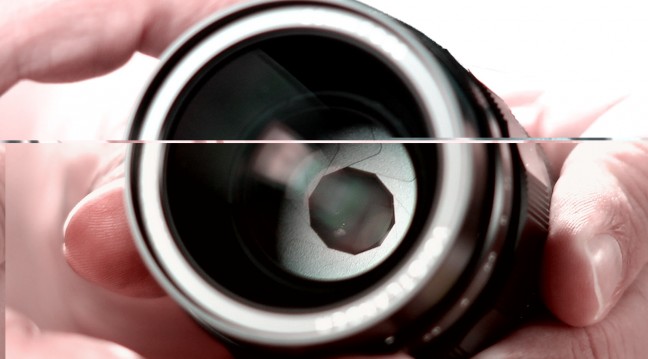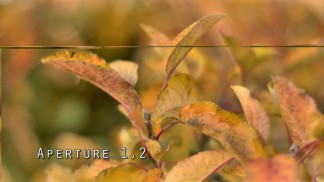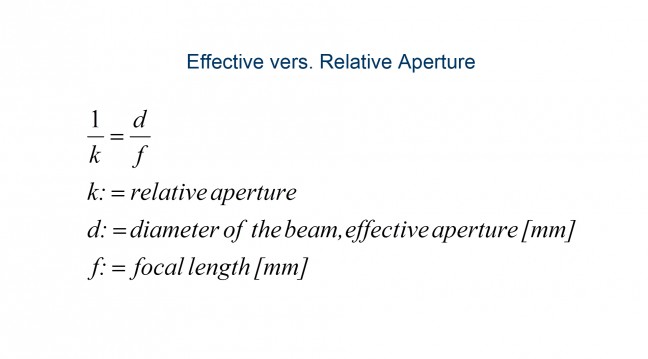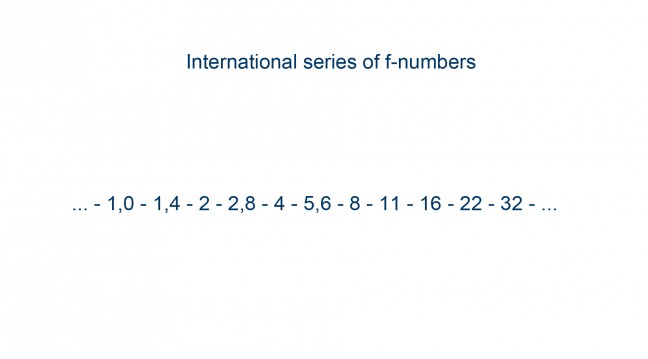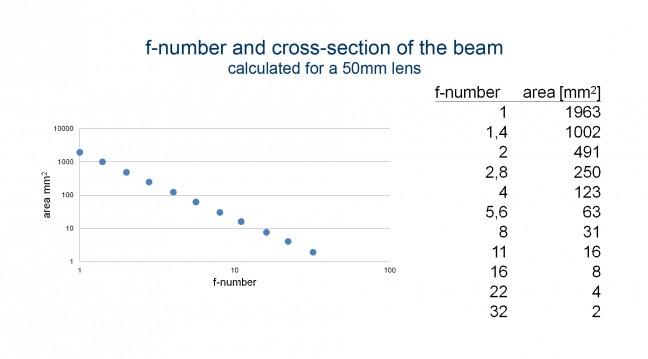#01 Aperture and f-number
Aperture and f-number
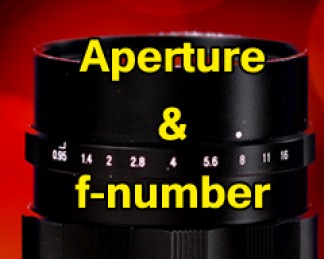
There are lenses, most likely to be photographic lenses, which click. This is because it gives you very defined openings. Cinematographic lenses usually don’t click – because if you tilt or pan the light setup might change and you require a gradual movement of your aperture. I often film with photographic lenses because they are significantly cheaper and sometimes even deliver superior image quality. That they click doesn’t bother me because there are often other measures to control the exposure – but I certainly have some cinematographic lenses in case I really need to control the aperture gradually.
On many lenses the aperture is controlled by electronic means. This is good and bad at the same time. Often your current aperture value is displayed within the view finder, which isn’t always that precise. Lenses for TV cameras have an electronic aperture control. You can also control it manually, but since it doesn’t click, you are most likely not to hit the desired aperture precisely. There are lenses on which you cannot control the aperture – such as telephoto lenses, which use a mirror. Some cameras simulate an aperture – which is pretty stupid. Now an aperture is something which you should see, it is pretty physical.
The aperture is important in videography as well as photography in order to control the amount of light which either hits the film or light sensitive chip. The aperture is therefore an exposure controlling parameter, and it is a creative parameter, since it allows you to control the DOF (depth of field.) Strictly speaking – you can call many parameters to be creative. But this terminology usually relates to the shutter and the aperture.
The leaves on the left picture have been recorded with a 50mm lens and an aperture of 1.2. The right picture has been shot with an aperture of 22. So you see that the aperture influences the depth of field. We are going to learn more about it within our next episodes because the aperture is not the only parameter, which controls the DOF.
If I say “I used an aperture of 1.2″ it’s a bit sloppy – but many people know what I mean. Since we conduct densitometry in our later episodes, which is essential for exposure control, I would like to step back a bit and elaborate on the term aperture. I mean these little numbers, which are written on many mechanical lenses.
Realtive Aperture vers. Effective Aperture
Let’s start with a light source. This initial diaphragm opening is just present in order to define our light. We add to our light source a diaphragm opening and a thin lens. The lens has a focal length of f. Our diaphragm opening k is called “relative aperture”. The diameter of the beam is called “effective aperture”. Between the “effective aperture D” and the “relative aperture k” we have a relationship, which is shown on the next slide.
It is important to remember that we have two apertures – the (i)effective aperture and (ii) the relative aperture. The effective aperture is related to the cross-section of the actual light beam, with the diameter d, which hits the lens. If f is the focal length of your lens than the relative aperture is defined as
(i) d = f/k
This equation assumes that our object is far away – so we focus on infinity. In the videographic or photographic world the terminology “aperture” most likely relates to the relative aperture.
The aperture is given by a series of numbers, which are often called f-numbers, because of this little f (the focal length of our lens) within the equation. An aperture of 1 or let’s say an f-number of 1 means that the diameter of our beam, which passes through the lens, matches the focal length of the lens. So your beam has on an 50mm lens with an aperture of 1, or an f-number of 1, 50mm diameter. Let’s have a look at these f-numbers.
Series of international f-numbers
This series is also called “series of international f-numbers”, because it is used worldwide. This series uses the f-number one. This series doesn’t really have a starting or end-point. But it is quite difficult to create a lens with an aperture of 0,5 or even bigger. Why do we have so crazy numbers?
If we want to control exposure, we always think in form of stops. If we decrease the amount of light by 1/2 then we say “we expose 1 stop down”. If we double the amount of light then we say “we expose 1 stop up”. The concept of stops is fundamental in densitometry, which is the discipline of exposure control. For example if you double your exposure time than you expose 1 stop up. In case you use the aperture for exposure control than people often say for example – can you go 2 f-stops down, which means that you decrease your aperture by 2 stops. People tend to become a bit sloppy with their terms and instead of saying – “…I exposed with an f-number of 8″ they probably say “I used an f-stop of 8″.
EXAMPLE: Let’s say you have an current aperture of 8 – that’s a popular f-number and you are going 1 f-stop down. You end up with an actual f-number 11. And if you go from your initial f-number 8 2-stops up then you end up at an aperture of 4. So in the last case you have quadrupled the amount of light.
You probably guess it. These crazy number arrive due to the definition of a circle’s surface, which is used to calculate the area of a cross section of the beam of light. So the amount of light transmitted is a function of the diameter squared, which is inverse proportional to our f-number.
The area of a circle A is usually defined as
(ii) A = Pi x D^2/4
On the next slide I have calculated the area of a cross section as a function of the f-number for a 50mm lens. So if we proceed within our series of f-numbers the cross sectional area of the beam halves.
Limitations of the f-number system
The f-number system is just one way to calibrate lenses. Cinematographic lenses are sometimes calibrated with a t-number, which takes into account the transmittance of a lens. The f-number system neglects this. Some lenses would probably rate T/2.8 rather than f/2.0. The T-system didn’t really cached popularity – probably because people would probably rather buy a f/2.0 lens than getting a T/2.8 even if it is the same lens. There are further calibration methods such as the APEX system, which you might like to consider.
Many physical equations are just an idealized form. They serve us more like a model and are useful to get the relationships right and to gain an overall understanding. For many real live calculations they are a bit simple. One of these assumptions are for example that we focus into nirvana and that our lenses are very thin. These lenses are certainly not thin and I sometimes like to do close-ups as well. This is going to be another topic, which I am going to discuss later.


